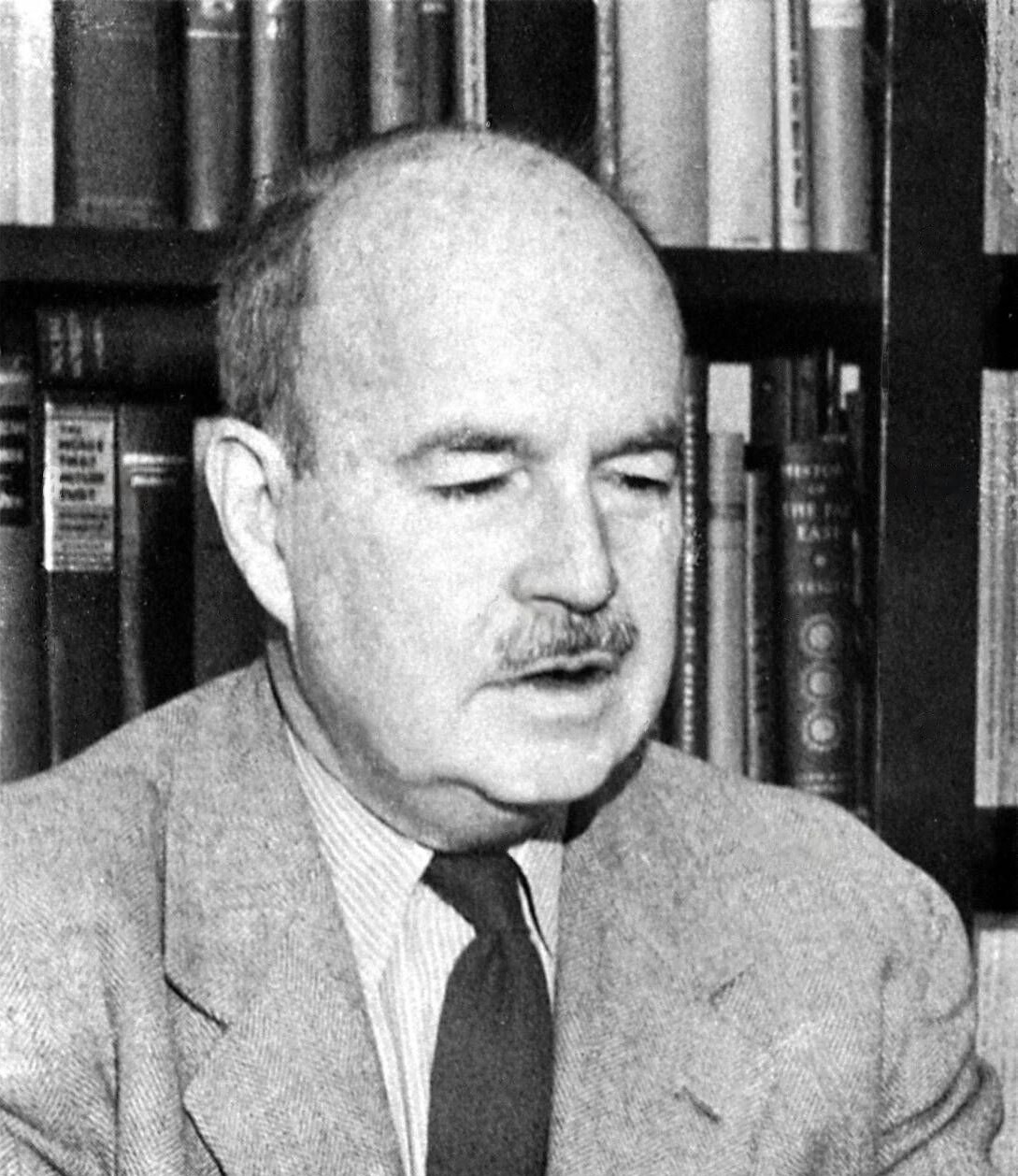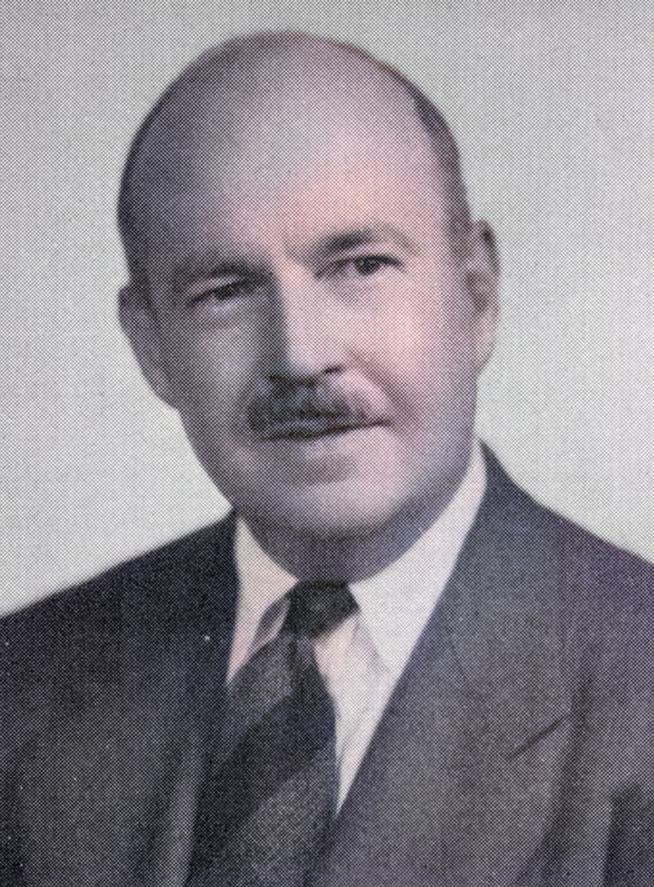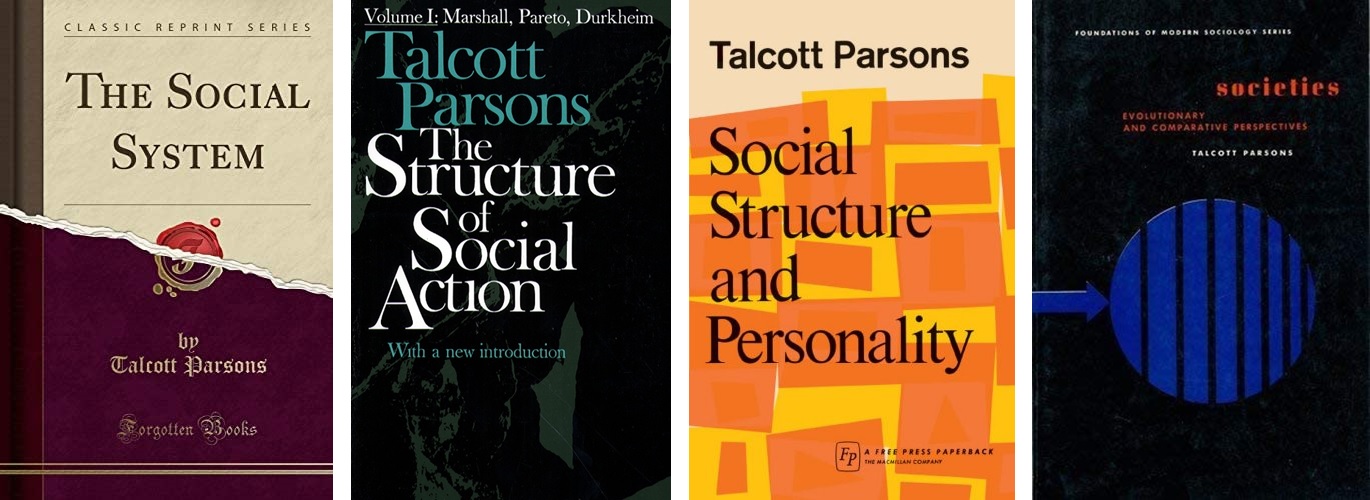Talcott Parsons
[1902-1979]
Talcott Parsons served as the 39th President of the American Sociological Society. The Prospects of Sociological Theory was the topic of his Presidential Address, which he gave at the organization's annual meeting in New York City in December 1949.
So what was Talcott Parsons' career as a sociologist like? Read the article below to learn more about Parsons and his professional background.
I. Introduction about Talcott Parsons Biography
American sociologist Talcott Parsons founded the sociology program at Harvard University. Particularly in America, his work had a significant impact through the 1950s and into the 1960s before gradually losing popularity after that.
Talcott Parsons promoted the "grand theory" method, which included all social sciences in addition to sociology. Despite receiving harsh criticism from his contemporaries, especially those who shared Marxist beliefs like C. Wright Mills, Parsons' work presented a positive view of human society and social action as developing in the direction of greater harmony and the potential for a peaceful world.

1. Who is Talcott Parsons?
On December 13, 1902, in Colorado Springs, Talcott Parsons was born. The Social Gospel, a Protestant Christian movement that promoted the idea that the Second Coming could not take place until man rid himself of all social evils, was active in which his father was a Congregational minister. Talcott Parsons was raised in a religious family, and his student Jesse R. Pitts later referred to him as "the last Puritan" . Early in Parsons' life, there was also an emphasis on academics because his father was the president of a small college in Ohio.
Parsons originally desired to become a biologist or physician. He earned a degree in philosophy and biology from Amherst College. Although Parsons was not initially exposed to the conventional Chicago or European schools of sociology, it was Amherst professor Walter Hamilton who first piqued his interest in the subject. After graduating from Amherst, he enrolled at the London School of Economics, where he first encountered the writings of Leonard Hobhouse, Bronislaw Malinowski, Harold Laski, and Richard Tawney.
2. Talcott Parsons early career
From 1927 to 1973, Parsons taught at Harvard University. He played a key role in the establishment of its department of social relations, which was inspired by Parson's idea of an all-encompassing social science. He was one of the most well-known sociologists in the world for a long time.
The "grand theory," an effort to unite all the social sciences under a broad theoretical umbrella, was supported by Talcott Parsons. With the presumptions that human action is voluntary, intentional, and symbolic, his early work, The Structure of Social Action, examined the works of his predecessors, particularly those of Max Weber, Vilfredo Pareto, and Émile Durkheim. Together with Edward Shils, he advanced this theory, resulting in the influential sociological text Toward a General Theory of Action, published in the middle of the 20th century.
According to Parsons' (1951) model, a "social system" is made up of various individual actors interacting with one another in a situation that at least has a physical or environmental component. These actors are driven by an urge to maximize gratification, and their relationships to their environments and to one another are defined and mediated by culturally structured symbols and beliefs. According to this conception, a social system is just one of three factors that make up the structuring of an entire system of social action. The other two factors are the personalities of the individual actors and the cultural system that they are a part of. Thus, Talcott Parsons' "grand theory" included aspects of psychology, economics, politics, religion, and philosophy in addition to sociological concepts.
II. Talcott Parsons Major Works
Later, Talcott Parsons got involved in a wide range of areas, including anthropology, small group dynamics, race relations, economics, and education. He also completed full training as a lay analyst at the Boston Psychoanalytic Institute and worked extensively with Robert Freed Bales in the field of medical sociology.
1. Functionalism
According to Parsons' general theoretical framework for societal analysis, which is based on a structural-functional approach, every group or society aspires to satisfy the following four functional imperatives:
- Goal attainment—the requirement to specify primary goals and recruit people to work toward achieving these goals in order to adapt to the physical and social environment.
- Maintaining individuals' motivation to carry out their roles in accordance with social expectations is known as latency. Integration is the coordination of a society or group as a whole.
2. Pattern variables
The AGIL Paradigm, the Unit Act, and Parsons' formulations of pattern variables may be his most notable theoretical contributions. According to Parsons, societies have two distinct aspects: "expressive" and "instrumental." He was implying by this that there are qualitative variations among various forms of social interaction. In essence, he found that, depending on the roles they play, people develop two different kinds of relationships: formally detached and personalized. He referred to the traits connected to each type of interaction as "pattern variables."
Families, churches, clubs, large crowds, and more intimate social settings are a few examples of expressive societies. Bureaucracies, aggregates, and markets are a few examples of instrumental societies.
3. Gloss
When Talcott Parsons described how the mind creates reality by "filtering" the information from our senses, he used the term "gloss." This "filtering" occurs largely unconsciously and is influenced by things like language, personal experience, belief systems, and other cultural constructs. Members of various societies call the various glosses produced by their respective cultures to be reality. The consequences of cultural collision may then be explained by a failure to recognize "glossing."

4. Criticisms
C. Wright Mills, a contemporary of Talcott Parsons, criticized him for his grand theory. According to Mills, a grand theory was the result of sociologists trying to impose their interpretation and will on data rather than being based on fact.
Parsons followed the evolution of society throughout history in an effort to bolster the validity of his theory. He looked at the "primitive," "archaic," and "modern" phases of evolution (where he defined archaic societies as having knowledge of writing and modern societies as knowledge of law).
Talcott Parsons examined the development of Western civilization, which he saw as the apex of modern society. He claimed that social systems had shifted toward greater adaptation (adjustments that maintain the systemic order), differentiation (the specialization of social institutions and the division of labor), upgrading (greater freedom from want), inclusion (normative diversity), and value generalization (values that are more reflective of the needs of an increasingly complex system) (Bolender 2004). Parsons claimed that the United States was the most dynamically advanced society in this work, for which he was criticized as an ethnocentrist.
According to Parsons' theory, society evolves in a similar way to biology, with modern societies displaying higher "generalized adaptive capacity" than earlier societies (Parsons 1971, 2-3). He proposed that all social systems strive for equilibrium, though they never actually achieve a fully balanced state. His detractors, especially those who supported the Marxist theory like Mills, argued that social and cultural systems have more of a tendency toward social change than toward equilibrium.
Parsons' writing style was challenging to understand, and he frequently used ambiguous or inconsistent terminology, like "pattern maintenance". Thus, Parsons' theories faced harsh criticism despite being initially well received and having a long-lasting impact on the field thanks to his work developing the sociology department at Harvard.
III. Talcott Parsons Death & Legacy
1. Where was Talcott Parsons buried?
In 1979, Parsons passed away from heart failure in Munich, Germany.

2. Talcott Parsons Legacy
One of the first well-known names in American sociology was Talcott Parsons. He played a key role in making the Sociology Department at Harvard University—then known as the Social Relations Department—one of the best in the world. His theoretical ideas, which were frequently linked to free market capitalism and conservative political philosophies, had an impact not only on sociology but on the entire field of social sciences.
In his later work, Parsons concentrated on a new theoretical synthesis based on four functions shared by all systems of action, from behavioral to cultural, as well as a set of symbolic media that facilitate communication between them. However, many American sociologists at the time were moving away from the grand pretensions of the 1960s and toward a more empirical, grounded approach, making his attempt to structure the world of action according to just four concepts challenging to accept. As a result, after 1970, Parsons' influence in the US rapidly diminished. The most well-known attempt to revive Parsonian thinking was made by Yale University sociologist Jeffrey Alexander under the banner of "neofunctionalism."
Given that he translated and compiled many of Max Weber's most important concepts, Talcott Parsons is at least partially to blame for Weber's popularity in the English-speaking world.
The influence of Parsons' work is also demonstrated by his Harvard students, some of whom, most notably, were Robert K. Merton and Kingsley.
IV. Talcott Parsons Books

1. The Social System
The classic study on social systems and the "theory of action" by Harvard's Talcott Parsons, which theorized and applied in a variety of settings, including the medical industry, kinships and role-socialization, psychological relationships, and religious organization. This foundational work is available from Quid Pro Books in a new, high-quality, introduced format that is easy to cite, reference, or assign to classes.
However, it still includes embedded page numbers from the original. Additionally, this feature maintains consistency with Quid Pro's new eBook editions . The book can now be read without the formatting inconsistencies of earlier editions, and it can be assigned and cited with confidence.
2. Social Structure & Person
A collection of essays that examine the theoretical issue of the connections between social structure and personality and how the various connections call for different approaches for various goals. In the big picture, Talcott Parsons comes to the conclusion that in order to achieve a balanced understanding of the complex as a whole, it is essential to bring them together in an interpretive synthesis because of how intimately interdependent they are.
3. The Structure of Social Action
This was Parsons' debut publication. It addresses the Hobbesian conundrum of how social order could exist. It primarily draws inspiration from Weber, Pareto, and Durkheim's writings. Its conclusion is that collective norms and values, rather than individual personalities, shaped social action (as argued by Freud and Weber).
4. Societies: Evolutionary and Comparative Perspectives
He reportedly revives macro- and comparative sociology in general in this work by moving away from the voluntary social action theory and toward an evolutionary framework. Primitive, intermediate, and modern are the three relatively broad stages that Parsons divides evolution into. Parsons breaks down the primitive and intermediate stages into additional substages and describes them using concrete examples of societies.
V. Talcott Parsons Quotes
Up until the 1960s, Talcott Parsons dominated American sociology. Because he was a conservative and traditionalist, he was largely ignored after that. Many sociologists disagreed with his view that man was an excessively socialized being in the latter half of the 20th century.
He nevertheless remained one of the most significant sources of information for subsequent scholars, particularly as a result of his research on the family, the status of women in society, racial relations, illness, role allocation, and authoritarianism in politics.
On building a system in sociology:
“The main concern of the study is with the outline of a theoretical system. Its minor variations from writer to writer are not a matter of concern to this analysis."
On Theory:
“Theory not only formulates what we know but also tells us what we want to know, that is, the questions to which an answer is needed."
On the function of the family:
“ The functions of the family in a highly differentiated society are not to be interpreted as functions directly on behalf of the society, but on behalf of personality."
On science and society:
“ Science is intimately integrated with the whole social structure and cultural tradition. They mutually support one other-only in certain types of society can science flourish, and conversely, without a continuous and healthy development and application of science such a society cannot function properly."
--- Talcott Parsons
WHAT IS YOUR IQ?
This IQ Test will help you test your IQ accurately
Maybe you are interested
